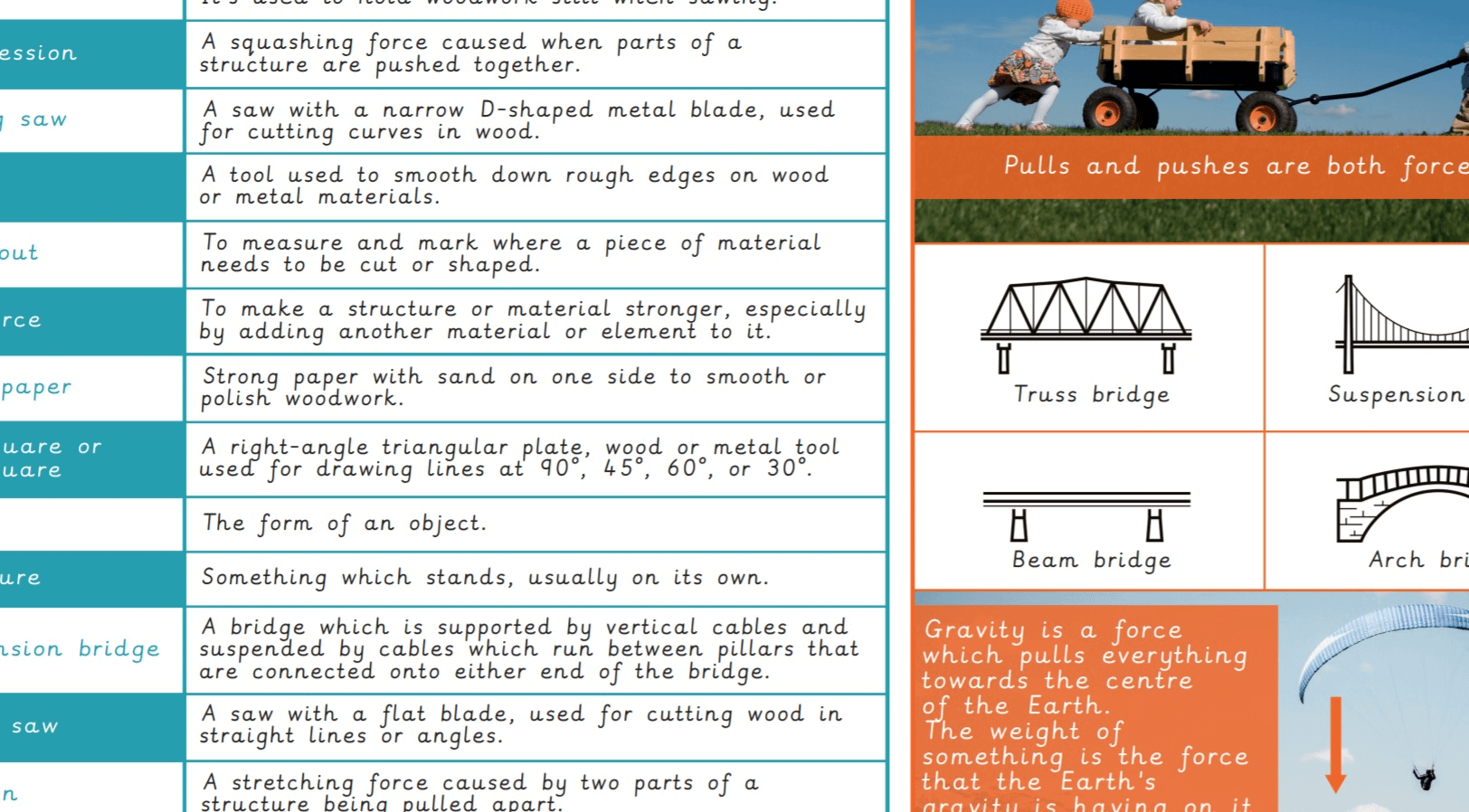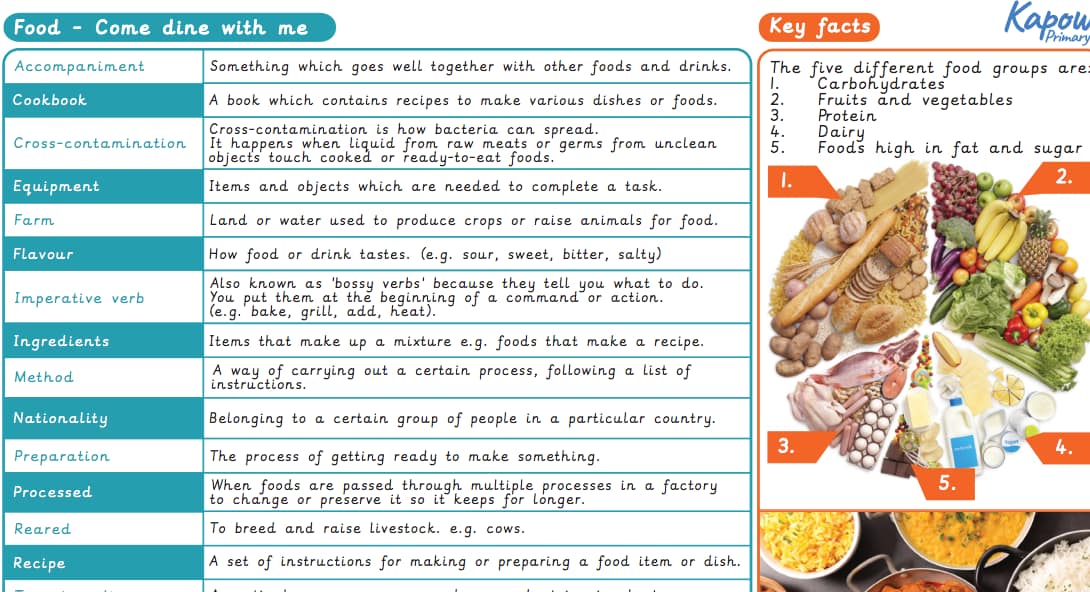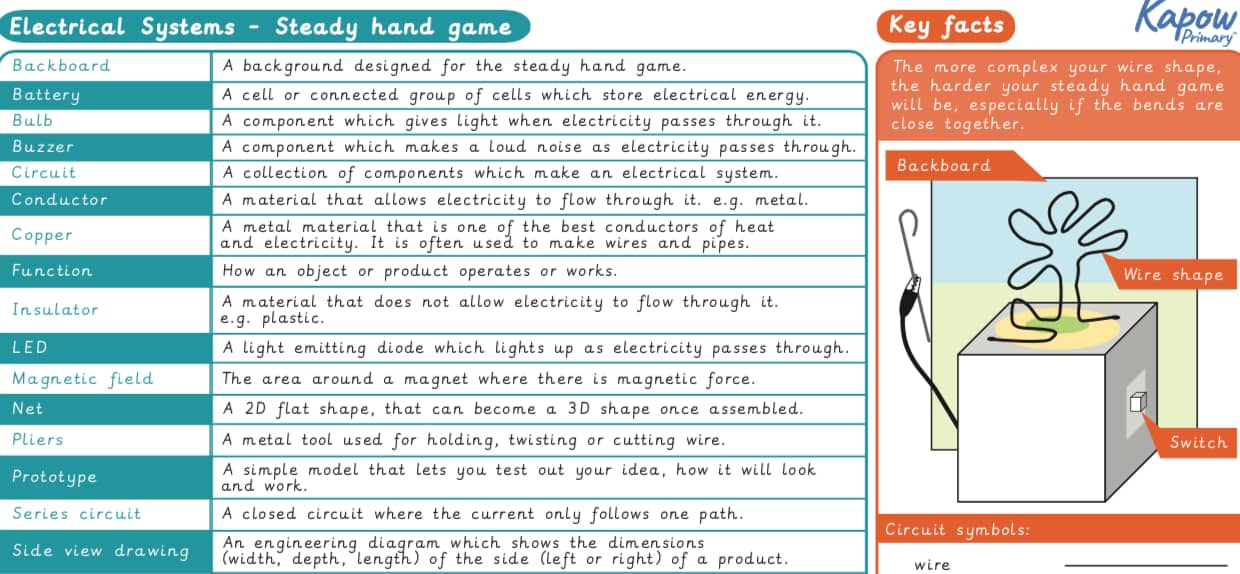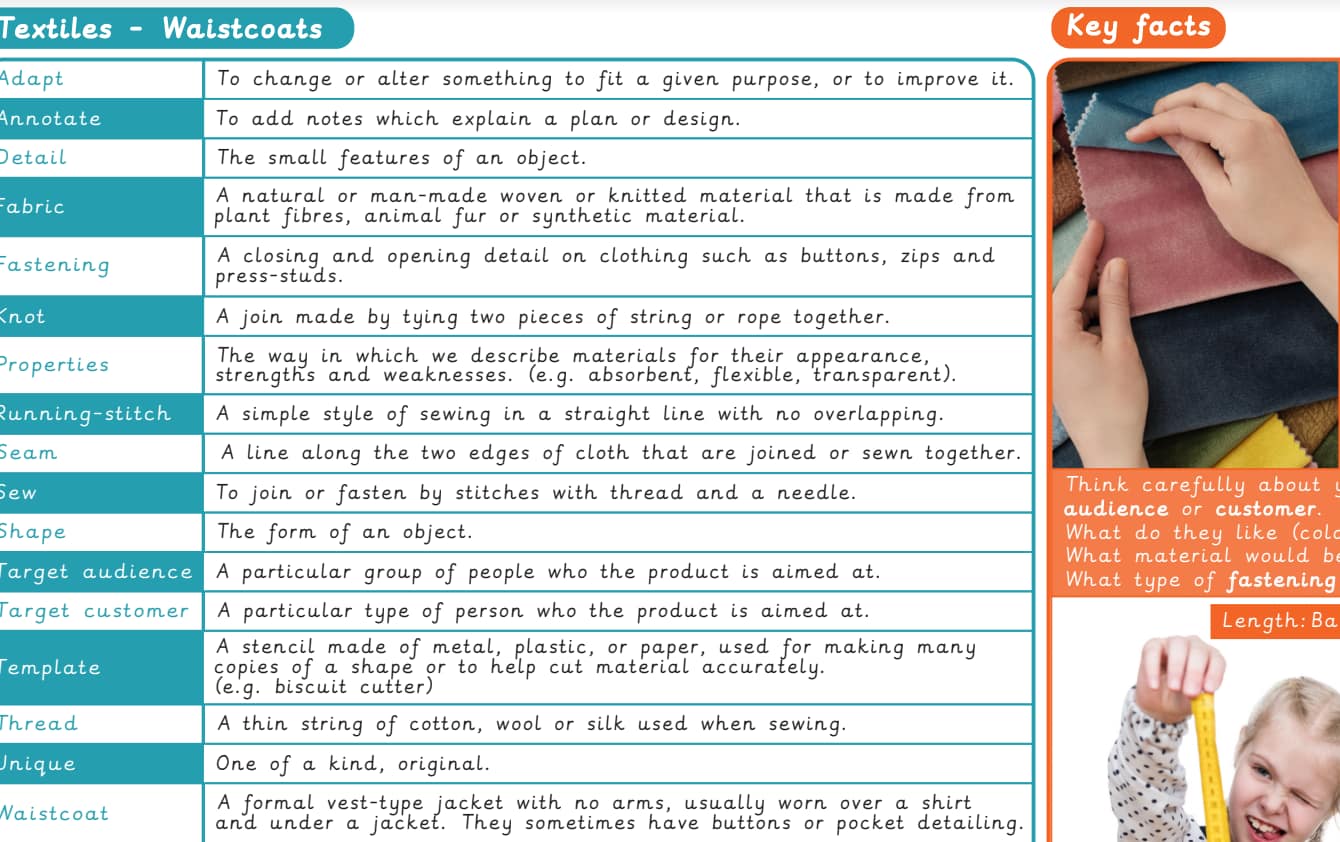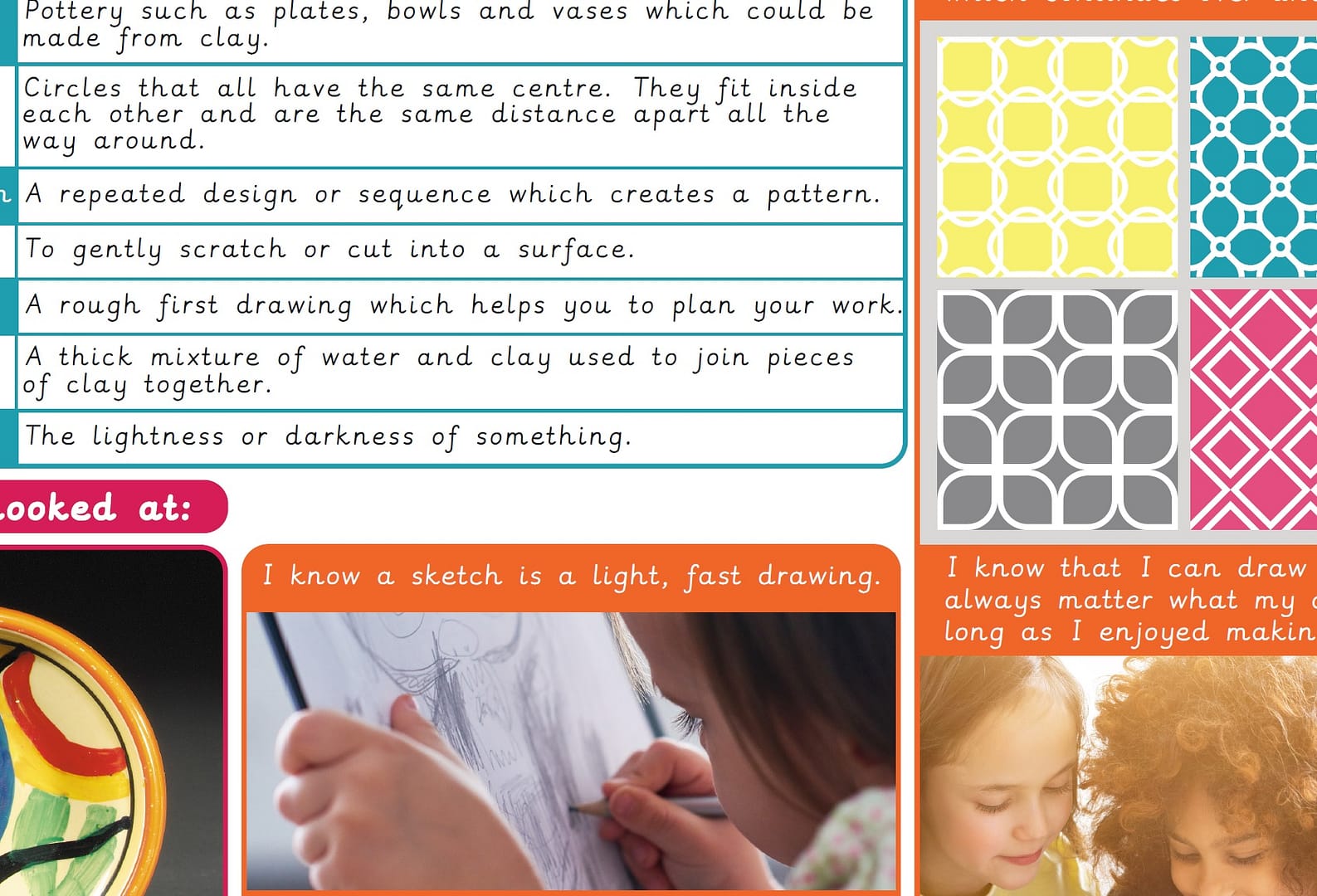
A Knowledge organiser that captures the essential knowledge and skills learnt throughout the unit Archived – Art and Design, Year 2, Art and Design Skills.
This resource is designed to support the pupils as they develop fundamental art and design techniques across different media. It introduces key vocabulary such as sketch, tone, ceramics, slip, and repeating pattern, helping the pupils build confidence in drawing, painting, and working with clay. The pupils will also explore how to create and refine their designs using methods like scoring clay, making concentric circles, and planning compositions through sketching. It is perfect for consolidating essential knowledge and fostering creativity by encouraging the pupils to experiment with different artistic approaches. Through hands-on activities, they will explore colour mixing, clay modelling, and pattern-making, while studying the works of artists such as Clarice Cliff and Nancy McCroskey. The unit promotes self-expression, problem-solving, and an appreciation for different artistic techniques and styles.
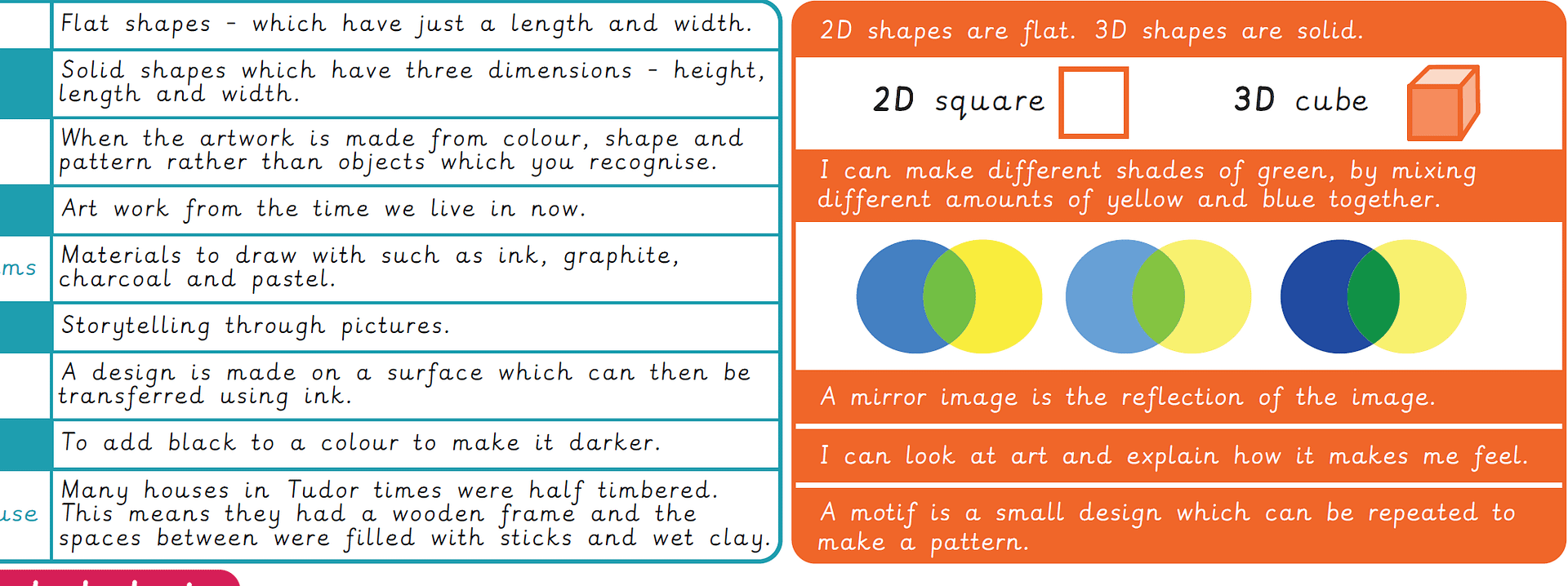
This is the original Art and design scheme, which has now been replaced by our new Art and design scheme. Here is the revised Art and design scheme of work for KS1.
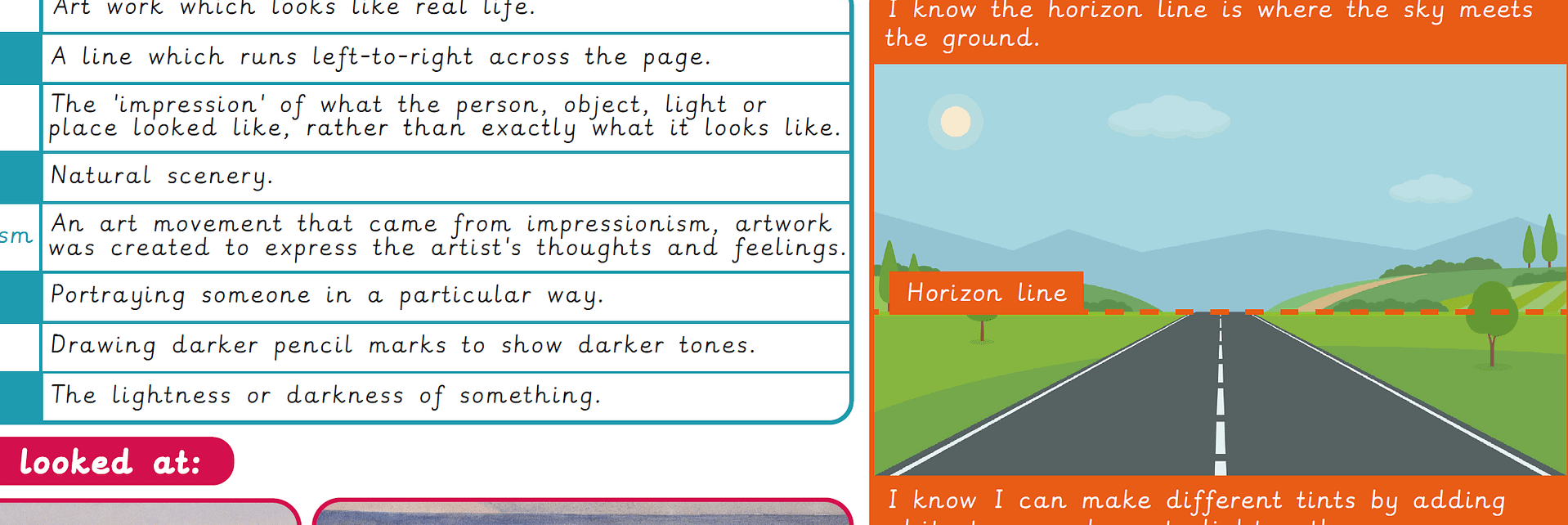
A Knowledge organiser that captures the essential knowledge and skills learnt throughout the unit Archived – Art and Design, Year 1, Landscapes Using Different Media.
This resource is designed to support the pupils as they explore different techniques for creating landscapes using a variety of media. It introduces key vocabulary such as horizon line, shading, tones, representation, and texture, helping the pupils develop an understanding of how artists create depth and atmosphere in their work. The pupils will also learn about important artistic movements such as Impressionism and Post-Impressionism and study the works of artists including Vincent van Gogh, Auguste Renoir, Peder Severin Krøyer, and Joaquín Sorolla. It is perfect for consolidating essential knowledge and fostering creativity by encouraging the pupils to experiment with different materials and techniques.
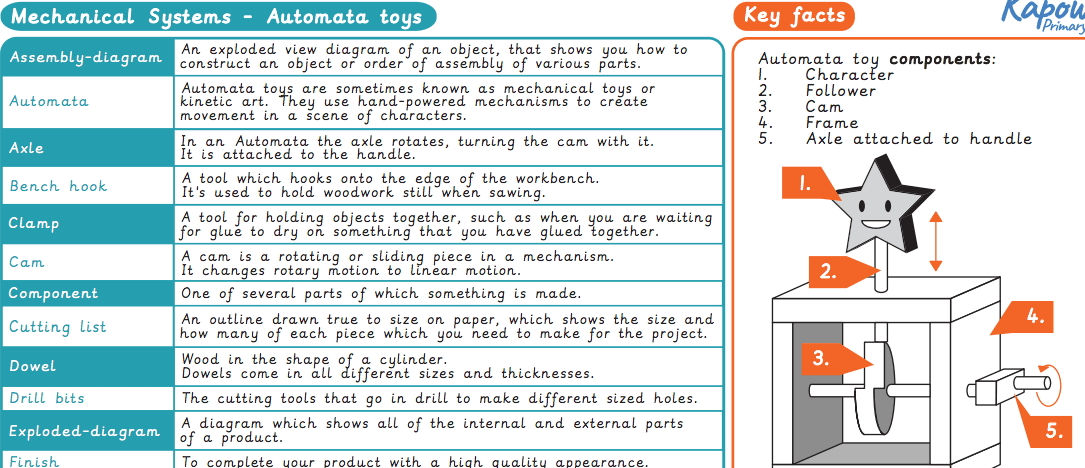
A Knowledge organiser that captures the essential knowledge and skills learnt throughout the unit Archived – Design and technology, Year 6, Mechanical systems: Automata toys.
This resource introduces pupils to the mechanical systems behind Automata toys, sometimes referred to as mechanical or kinetic art. It explains how these toys use hand-powered mechanisms to create movement through key components such as cams, followers, axles, frames, and characters. The organiser defines important tools and materials like dowels, clamps, and drill bits, and includes a visual guide to different cam shapes—round, snail, and ellipse—demonstrating how they produce varied motion effects. Pupils are also introduced to terminology such as “exploded diagram,” “cutting list,” and “linkage,” supporting the development of practical skills and design vocabulary needed to create functioning mechanical toys.





